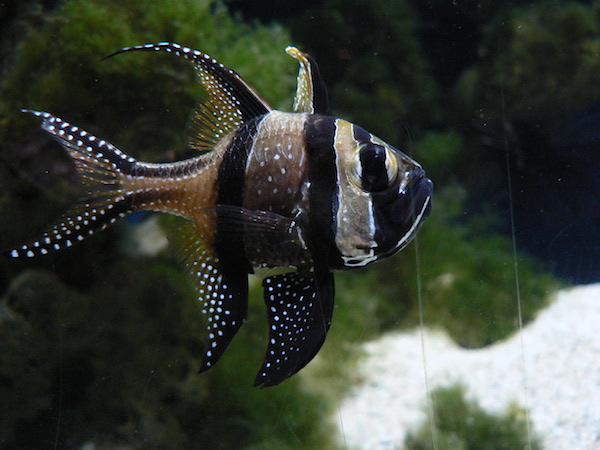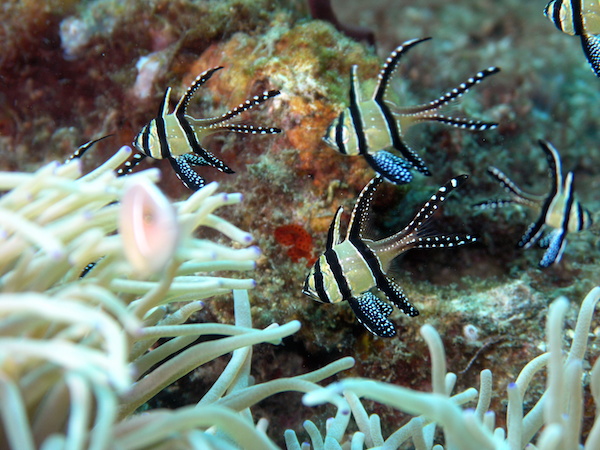|
Imperiled Fish, in Demand for the Aquarium Trade, Will Receive Needed Protections Washington, DC—Today the National Marine Fisheries Service (Service) announced that it will list the Banggai cardinalfish (Pterapogon kauderni) as “threatened” under the Endangered Species Act (ESA) in response to a 2013 petition from WildEarth Guardians. “Providing protections for the Banggai cardinalfish is crucial because demand for aquarium fish in the United States is a chief cause of this imperiled species’ decline,” said Taylor Jones, endangered species advocate for WildEarth Guardians. “These beautiful fish deserve a chance to recover in their wild homes, and should not be relegated to tiny tanks for people’s entertainment.” The cardinalfish is the tenth most common aquarium fish imported into the United States. After nearly two decades of intensive capture, populations of cardinalfish in their native habitat—the Banggai Archipelago of Indonesia—have drastically shrunk. In combination with destruction and fragmentation of the species’ small range and climate change impacts on coral reefs, human exploitation puts these fish at risk of extinction. The ESA does not yet completely protect these fish, however. For species listed as “threatened” rather than “endangered,” the Service can decide whether or not to extend certain protections; prohibitions on killing, harming, or harassing a listed species. For the cardinalfish, the Service announced it will consider additional regulations in a future rule. For now, there will be no change in regulations governing trade or possession of cardinalfish. “The Service should quickly finalize regulations prohibiting removal of these beautiful fish from the wild,” continued Jones. “Endangered Species Act protection will mean much less for these fish if it does not address the main threat: collection from the wild for the aquarium trade.” WildEarth Guardians submitted a petition to 81 marine species and subpopulations under the ESA in July of 2013, including the Banggai cardinalfish, due to the significant threats to our oceans. An estimated 50-80 percent of all life on earth is found in the oceans. More than half of marine species may be at risk of extinction by 2100 without significant conservation efforts. Despite this grave situation, the U.S. largely fails to protect marine species under the ESA. Of the 2,245 species protected under the Act, only 130 (about six percent) are marine species. Recognizing the decline of ocean health, on July 22, 2010 President Obama issued an Executive Order requiring agencies, including the National Marine Fisheries Service, to “protect, maintain, and restore the health and biological diversity of ocean... ecosystems,” and to “use the best available science and knowledge to inform decisions affecting the ocean.” Guardians’ multi-species marine petition sought to compel the Service to live up to this mandate. Protection under the ESA is an effective safety net for imperiled species: more than 99 percent of plants and animals protected by the law exist today.
The law is especially important as a defense against
the current extinction crisis; species are disappearing at a rate much higher
than the natural rate of extinction due to human activities. Scientists
estimate that 227 species would have gone extinct by 2006 if not for ESA
protections. Listing species with global
distributions can protect them from trade and help focus U.S. resources toward
enforcement of international regulations and recovery of the species.
photo: group of cardinalfish Jens Petersen, Flickr, Creative Commons |
|
|
info@wildearthguardians.org | © WildEarth Guardians | Historical Archives | Privacy Policy


